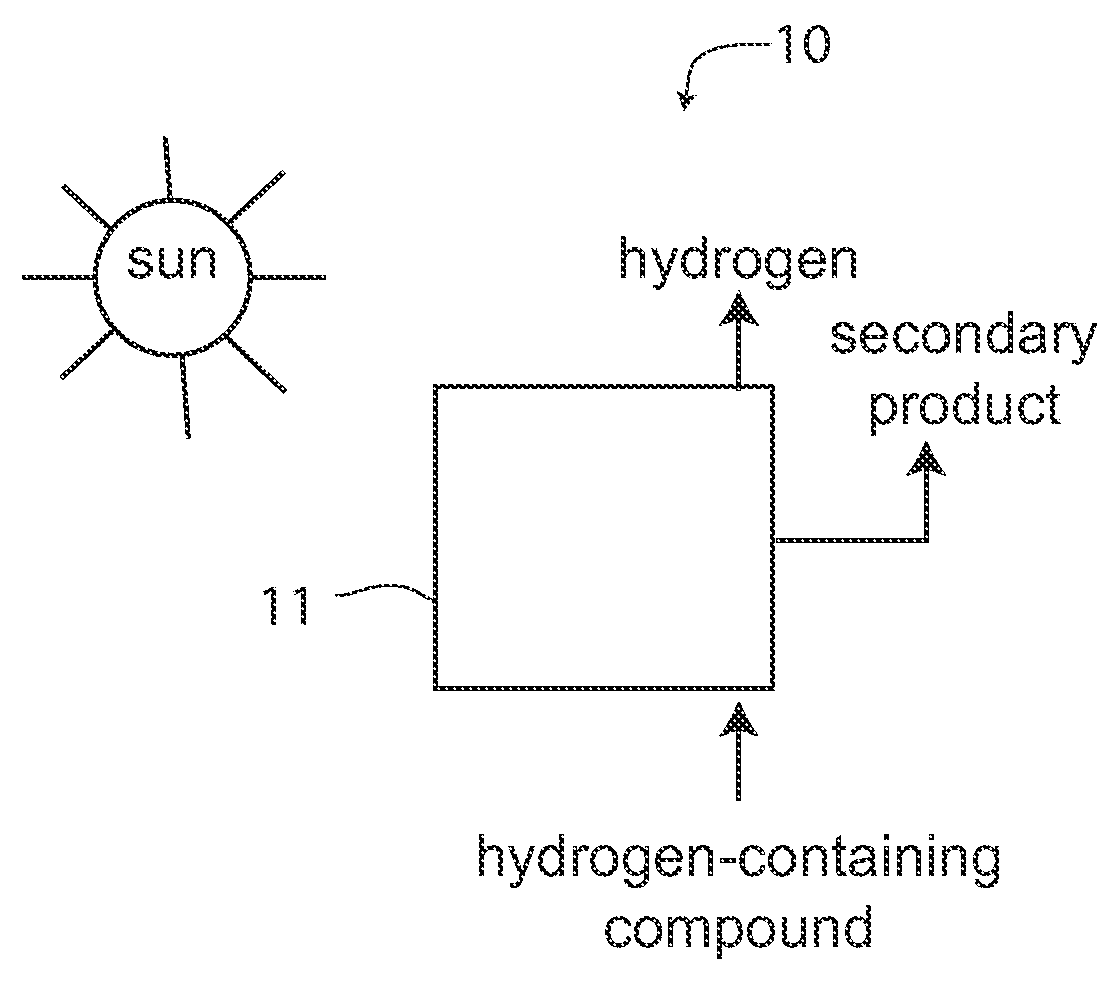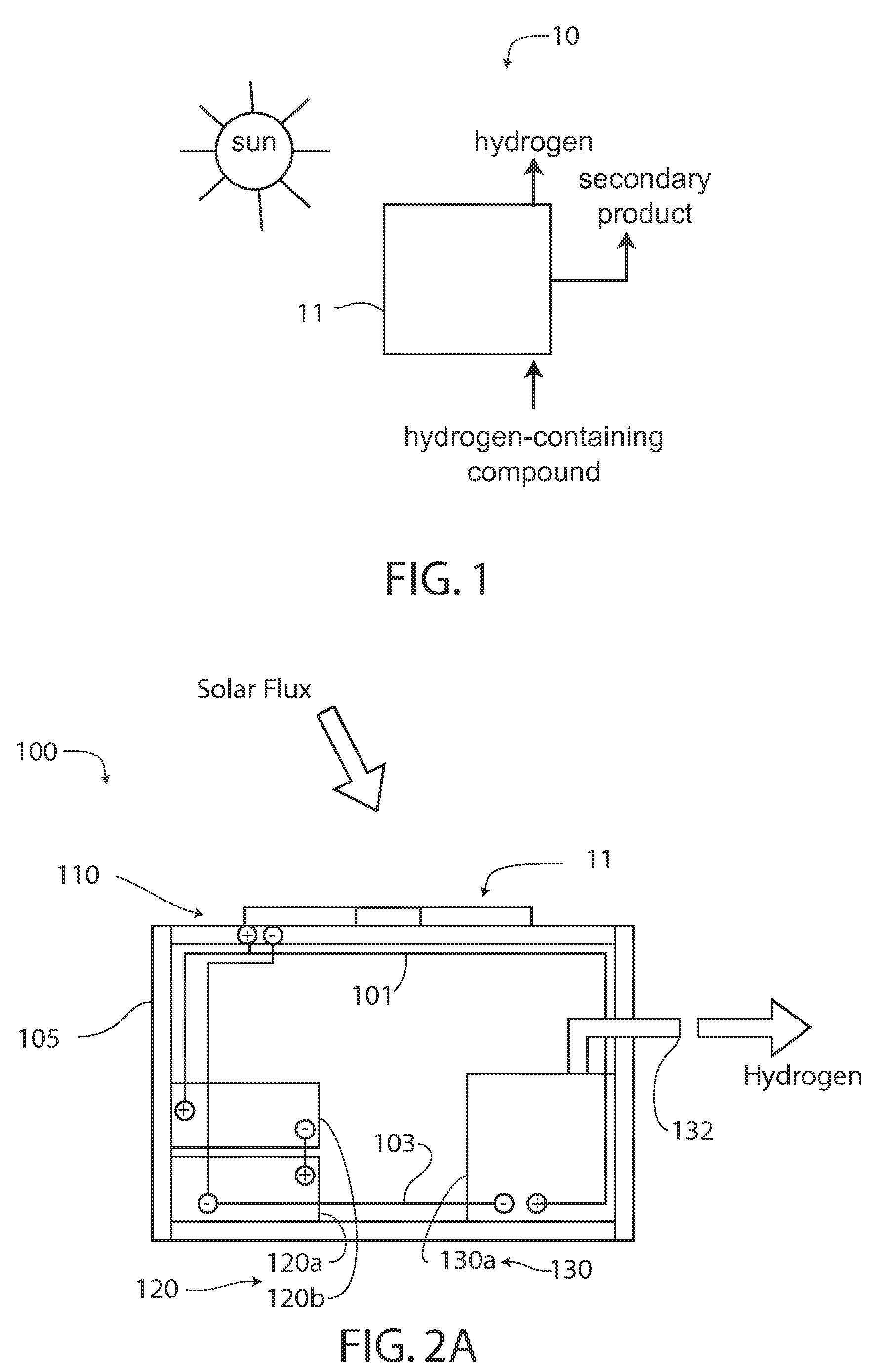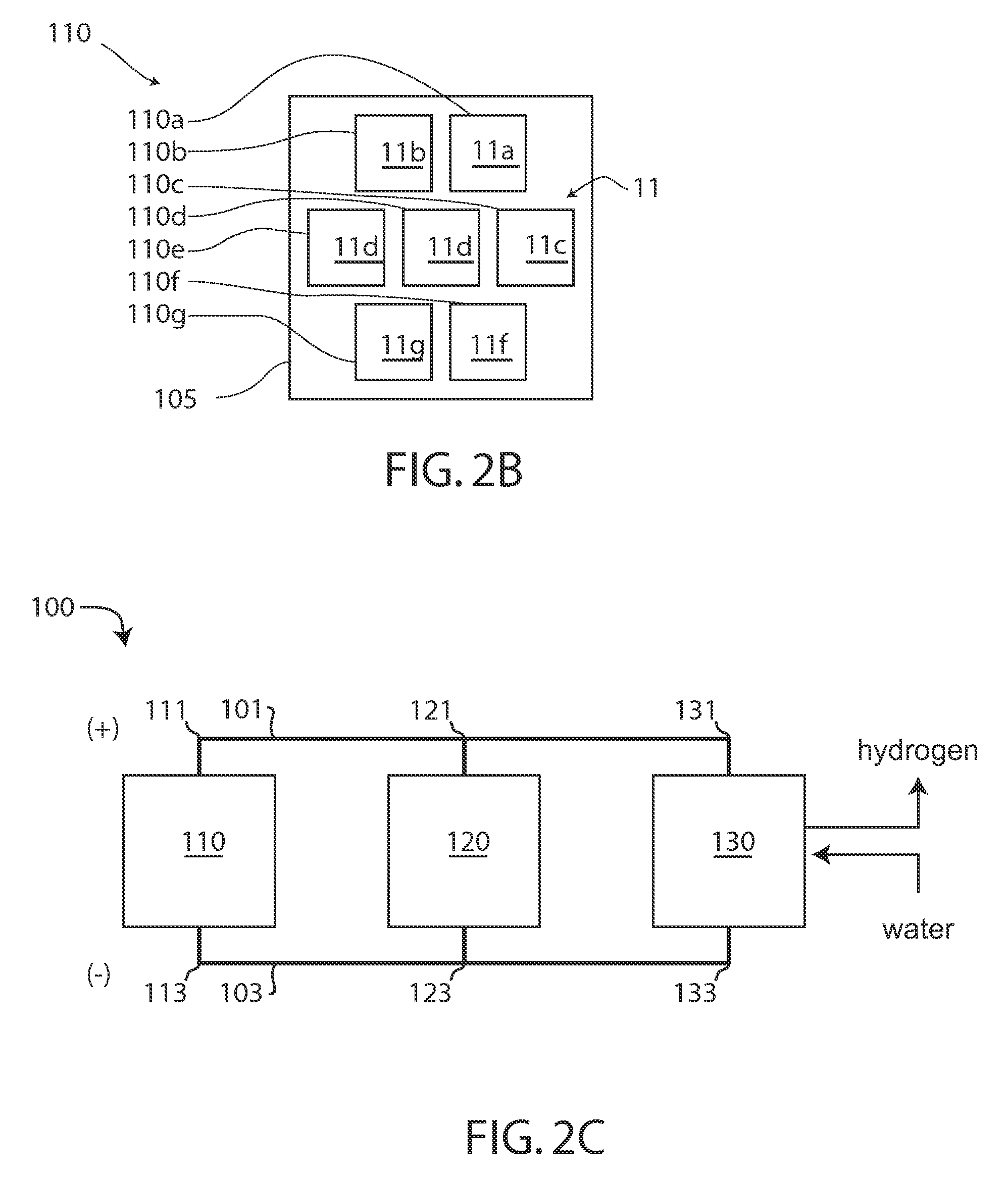Solar hydrogen generation system
- Summary
- Abstract
- Description
- Claims
- Application Information
AI Technical Summary
Benefits of technology
Problems solved by technology
Method used
Image
Examples
first embodiment
[0034]FIGS. 2A, 2B, and 2C are schematics of a first embodiment solar hydrogen generation system 100, where FIG. 2A is a schematic side view of the solar hydrogen generation system, FIG. 2B is a schematic side view of the system, and FIG. 2C is a schematic wiring diagram of the system. System 100 may be generally similar to the system 10.
[0035]System 100 includes a PV module 110, an electric energy storage module 120, and an electrolyzer module 130. As shown in FIG. 2A, modules 110, 120, and 130 are located on a frame 105. Alternatively, module 110 is located on frame 105 and modules 120 and 130 are located nearby.
[0036]PV module 110 includes, but is not limited to, one or more solar energy-to-electricity generating devices formed of bulk, thin film, multi-layered thin-film composites, polymers, or matrices thin-film photovoltaic materials in a conductive polymers or mesoporous metal oxide matrix, and referred to herein without limitation as “PV devices.” PV modules that may be used...
second embodiment
[0042]FIG. 3 is a schematic of a second embodiment solar hydrogen generation system 300, which may be generally similar to systems 10 or 100, except as described below.
[0043]System 300 includes magnifying optics—specifically a lens 301 positioned above PV module 110 using frame 303, which is otherwise similar to frame 105. The design on magnifying optics is well known in the field. As an example which is not meant to limit the scope of the present invention, if lens 301 has a focal length, f, and is positioned a distance, L, above PV module 110, then the magnification, M, is given by M=f / (f−L). This magnification is also referred to herein as the number of “suns”—that is a magnification of 2 is the equivalent to “2 suns” of flux. Alternatively, compound lenses or non-imaging optical devices are used to magnify the solar flux on PV module 110.
third embodiment
[0044]FIG. 4 is a schematic of a third embodiment solar hydrogen generation system 400, which may be generally similar to the systems 10, 100, or 300, except as described below.
[0045]System 400 includes a frame 401 on which PV module 110 is mounted and, alternatively, a lens 301. System 400 also includes a tracking system 410 that includes an electronic device 411 mounted on a frame 401, a motor / gimbal assembly 413, and a mounting post 415 that is mounted in the ground. Electric energy storage modules 120 and electrolyzer module 130 are located on the ground near mounting post 415. FIG. 4 also schematically shows the wiring of modules 110, 120, and 130.
[0046]The mounting of PV on trackers is well known in the art. Typically the PV is rotatably mounted to present surface 11 towards the sun by rotating system 400 using one or more motors. Thus, for example, photovoltaic module 110 is driven by motor / gimbal assembly 413 such that surface 11 is pointed towards the sun. By tracking the s...
PUM
 Login to View More
Login to View More Abstract
Description
Claims
Application Information
 Login to View More
Login to View More - R&D
- Intellectual Property
- Life Sciences
- Materials
- Tech Scout
- Unparalleled Data Quality
- Higher Quality Content
- 60% Fewer Hallucinations
Browse by: Latest US Patents, China's latest patents, Technical Efficacy Thesaurus, Application Domain, Technology Topic, Popular Technical Reports.
© 2025 PatSnap. All rights reserved.Legal|Privacy policy|Modern Slavery Act Transparency Statement|Sitemap|About US| Contact US: help@patsnap.com



